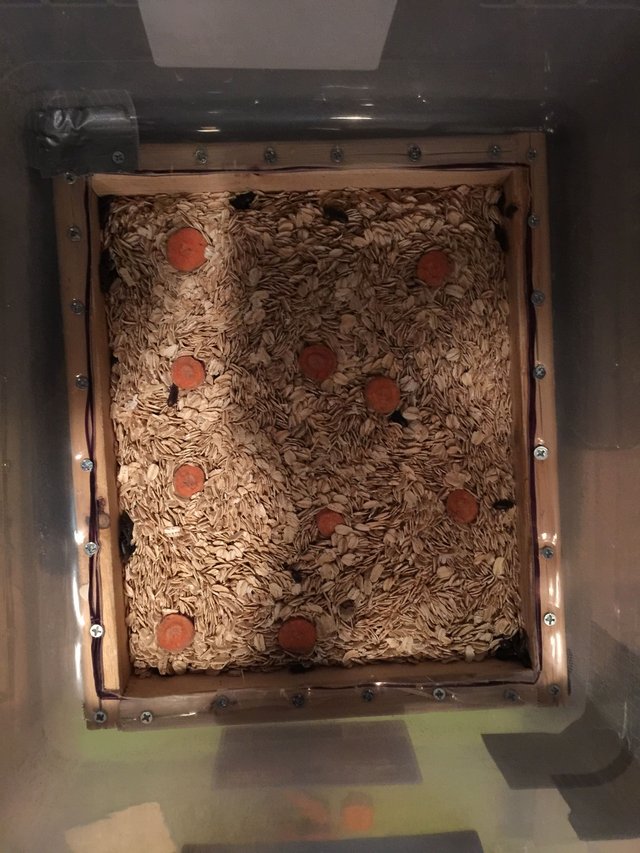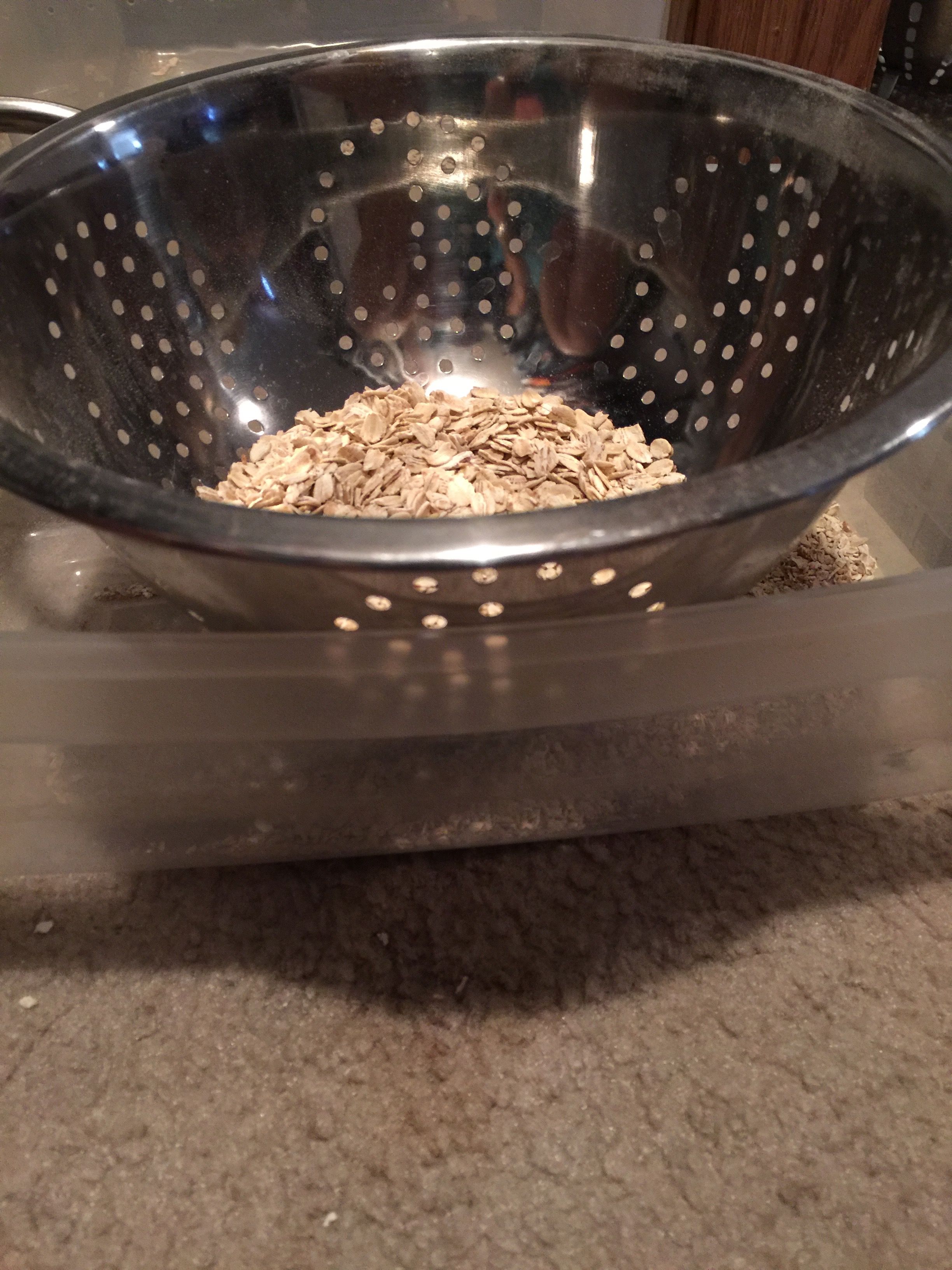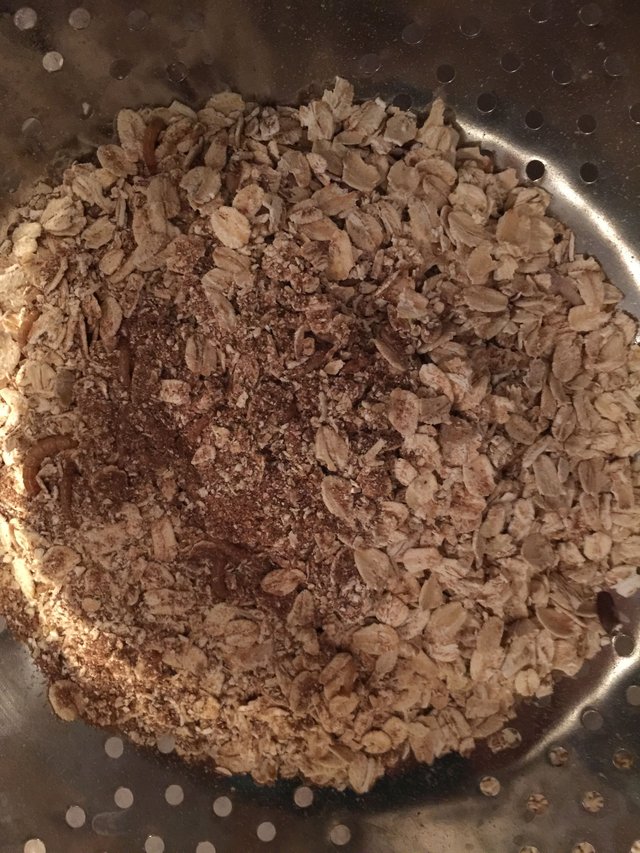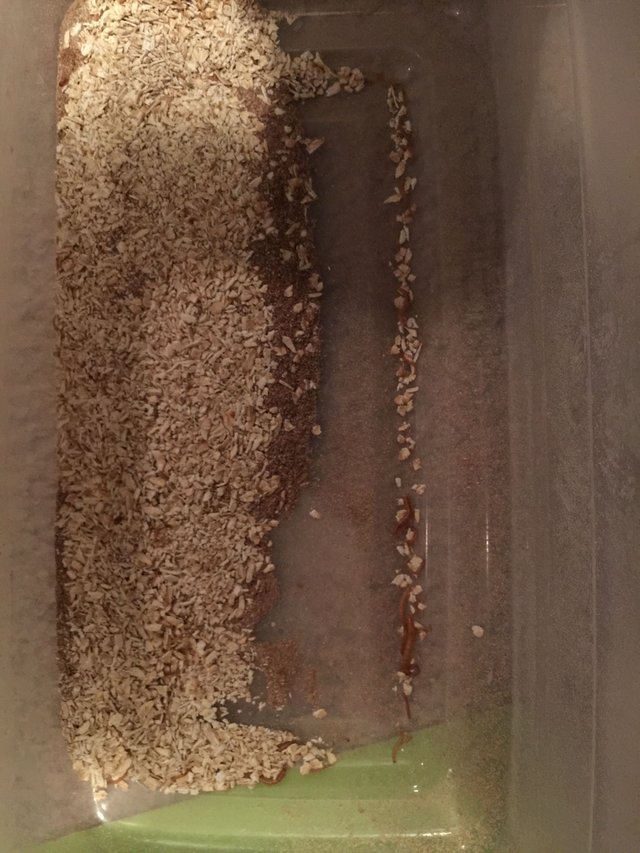CleanYourWorms
As part of my homesteading adventures, besides for the general basics, I grow mealworms. This may sound strange to some, however, chickens and ducks love, love, love these creepy crawlies! Now, sure I could buy bags of mealworms at the store, but seriously, way to expensive for my taste. My fondness for mealworms traces back to the good 'ole days of fishing with my grandparents, now, mind you, I liked to play with them, but refused to put them on the hook :-) But I never grew them until now. So, when I became a chicken/duck owner, my team and I try to figure out ways to reduce our chicken/duck feed bill (we also grow other things, coming soon). After some investigation, mealworms seemed like a pretty easy and good route to take. afters hours of youtube research, this is the bin setup I chose, courtesy of Mechanical Ninjineer.
afters hours of youtube research, this is the bin setup I chose, courtesy of Mechanical Ninjineer.
 if it's something you might be interested in, check him out.
if it's something you might be interested in, check him out.
I got my batch of mealy's in May, so I have not been growing them long, there were thousands of them. I did not have the bin system until a couple months ago, and since then, they have been much easier to maintain. I had them in little rectangular totes at first, and that's only because that's what I had on hand.

(image courtesy of sugarglider.com) meal worm life cycle
As you can see, these guys take a long time to grow, which I found out after the fact, hehe. But anyhow, I think once you get a system with different phases of eggs/worms it is a good system. And with most growing systems, they need tending to, ugh! yes, you gotta clean them out!

I combined two rectangular bins I had from my original colony of hatched eggs into this bin. The mealy's in here were too small for me to sift through.

my method, ha, good old fashioned collandar. works just fine, of course there's some special sifting tools you can purchase online, but, if it's not broke.......

many levels of instar phases in here, and some fall through no doubt, so I have to do another sifting set with a much smaller sifter. and all the fine, dark brown looking debris is mealy poop! and that's what I am trying to sift out. along with any shed skins and broken up oats. fun, fun!

little beauties!

and after I'm done, this is the stuff I am left with, along with the very small worms that still are small enough to fall through
and to ensure I maximize my worms, I renew this container with fresh oats and carrots for the mealy's I missed. And when they get bigger in a few weeks, I will transfer them into a more permanent container.

This idea is not just great for chicken/duck owners, but also great if you are a reptile enthusiast.
Congratulations @sback! You have completed some achievement on Steemit and have been rewarded with new badge(s) :
Click on any badge to view your own Board of Honor on SteemitBoard.
For more information about SteemitBoard, click here
If you no longer want to receive notifications, reply to this comment with the word
STOPI love this idea. My chickens and guineas would love these in the winter months when it's slim pickin's outside and my daughters bearded dragon will flip for them. She grows crickets but they can get a bit stinky in the house. This looks like a great setup. I'll be sure to check out Mechanical Ninjineer as well. Happy growing.
If you rotate and sift your beetles every week you will get better production with much less work. It keeps all the mealworms within a week of each other so they are all the same size. This means you will just have to sift them out once for feeding. I produce over 100k mealworms a week in around 1 hour of time used. Also that mealworm poop is called frass and is absolutely wonderful for your garden and plants. I wrote a few articles on mealworms here but I run a group on Facebook also if you are interested in expanding your setup to produce more feed for your birds. I also sell my extra worms and sell my extra frass also. If you like mealworms have you looked into composting worms also? The are a different setup but breed quickly and produce quality castings for your gardens also and your birds will love them too.